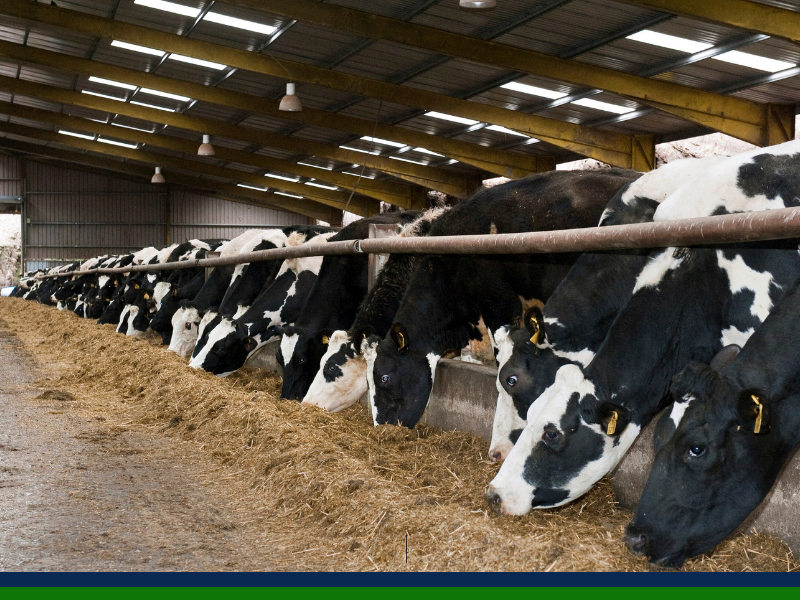With ever tightening profit margins, especially in the beef sector, the complex area of feed efficiency is and must continue to command close attention. In intensively fed animals there is a constant challenge to juggle the balance between optimising milk and meat output in the most economical way, while maintaining optimum rumen health at all times.
It is vital that the rumen environment is maintained in a healthy state to avoid the occurrence of acidosis. Acidosis occurs as a result of poor rumen health status and can present in two forms; clinical and sub clinical. The second form mostly presents as Sub Acute Rumen Acidosis (SARA). SARA is the main dietary performance constraint of intensively fed animals.
SARA has three principal causes:
- High intakes of starches, sugars and acidic feeds.
- Inadequate structural fibre in diet.
- Inability of rumen to adapt to a highly fermentable / low fibre diet.
Identifying Sub-Acute Rumen Acidosis (SARA) in your herd
The tell-tale signs of SARA are sometimes difficult to detect through visual observation however, symptoms include:
- Animals performing 5-10% below capacity.
- Bubbles on dung.
- Less than 80% of animals which are lying down observed chewing the cud.
- Mildly depressed demeanour.
- Increased lameness levels.
- Cows swishing their tails (due to passing acidic manure).
Rumen Buffer Feeding
Maintaining good rumen health can be achieved through the inclusion of adequate roughage in the animals’ diet, such as straw and through the addition of a suitable rumen buffer. Straw can act as an excellent buffer but must be limited due to its low nutritive value and space requirement in the rumen. This year in particular, straw quality in many cases is not of adequate feed quality for livestock and is no longer a cheap option.
Feeding of an appropriate rumen buffer will play a valuable role on all farms where there are intensively fed animals or low fibre diets. A high-quality rumen buffer will not only help avoid problems like acidosis but it will also improve feed efficiency, optimise the rumen environment and maximise the return from your winter ration.
Rumicare– why it’s the best option
Rumicare is a phased release buffer and is available as Rumicare Beef and Rumicare Dairy. It contains a unique blend of buffers that each have their own mode of action and different speeds of breakdown (phased release) within the rumen. The combination of ingredients maintains a more desirable pH within the rumen at critical times throughout each 24-hour period.
Rumicare works on two different fronts in the fight against SARA. It directly neutralises rumen pH through its alkaline properties, while the added yeast also acts as a natural buffer by enhancing rumen bacterial growth. This combination of buffers and yeast has long been shown to gel very well together.
Speaking with farmers that have used Rumicare in the past, livestock are in great form, displaying improved appetites, performance and producing more consistent manures. Rumicare also smoothens transition diets with less setbacks and less displaced abomasums. Another added bonus is that it provides a very good level of calcium and magnesium, which is particularly important for the lactating dairy cow in early lactation.
On farm support during COVID-19
In order to keep our customers and staff as safe as possible, our sales team and distributors we will be minimising the number of on farm consultations. We are however, as always, available for FREE delivery direct to farm and over the phone consultations. Contact your local Agritech sales rep/distributor to place your order or click here.
For further advice or information on our Welmin Mineral Supplements range, click here.


